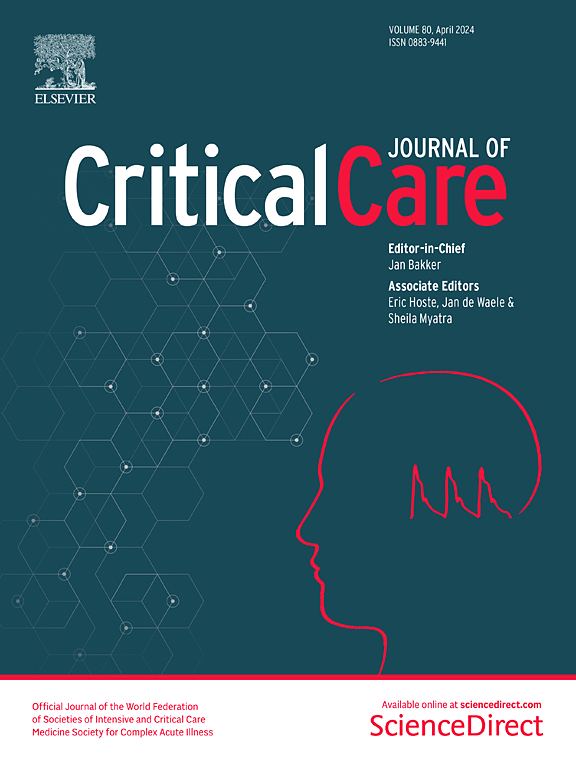Liberal versus restrictive transfusion strategies in subarachnoid hemorrhage: a secondary analysis of the TRAIN study
IF 8.8
1区 医学
Q1 CRITICAL CARE MEDICINE
引用次数: 0
Abstract
The optimal hemoglobin (Hb) threshold to trigger red blood cell transfusions (RBCT) in subarachnoid hemorrhage (SAH) patients is unclear. This study evaluated the impact of liberal versus restrictive transfusion strategies on neurological outcome in patients with SAH. This is a pre-planned secondary analysis of the “TRansfusion Strategies in Acute brain INjured Patients” (TRAIN) study. We included all SAH patients from the original study that were randomized to receive RBCT when Hb levels dropped below 9 g/dL (liberal group) or 7 g/dL (restrictive group). The primary outcome was an unfavorable neurological outcome at 180 days, defined by a Glasgow Outcome Scale Extended score of 1–5. Of the 190 SAH patients in the trial, 188 (98.9%) had data available for the primary outcome, with 86 (45.3%) in the liberal group and 102 (53.6%) in the restrictive group. Patients in the liberal group were older than in the restrictive group, but otherwise had similar baseline characteristics. Patients in the liberal group received more RBCT and showed higher Hb levels over time. At 180 days, 57 (66.3%) patients in the liberal group and 78 (76.4%) in the restrictive group had unfavorable outcomes (risk ratio, RR 0.87; 95% confidence intervals, 95% CI 0.71–1.04). Patients in the liberal group had a significantly lower risk of cerebral ischemia (RR 0.63; 95% CI 0.41–0.97). In a multivariate analysis, randomization to the liberal group was associated with a lower risk of unfavorable outcome (RR 0.83, 95% CI 0.70–0.99). A liberal transfusion strategy was not associated with a lower incidence of unfavorable outcome after SAH when compared to a restrictive strategy. However, in a multivariable analysis adjusted for confounders randomization to the liberal group was associated with lower risk of unfavorable outcome. The occurrence of cerebral ischemia was significantly lower in the liberal transfusion strategy group. ClinicalTrials.gov number—NCT02968654 registered on November 16th, 2016.求助全文
约1分钟内获得全文
求助全文
来源期刊

Critical Care
医学-危重病医学
CiteScore
20.60
自引率
3.30%
发文量
348
审稿时长
1.5 months
期刊介绍:
Critical Care is an esteemed international medical journal that undergoes a rigorous peer-review process to maintain its high quality standards. Its primary objective is to enhance the healthcare services offered to critically ill patients. To achieve this, the journal focuses on gathering, exchanging, disseminating, and endorsing evidence-based information that is highly relevant to intensivists. By doing so, Critical Care seeks to provide a thorough and inclusive examination of the intensive care field.
 求助内容:
求助内容: 应助结果提醒方式:
应助结果提醒方式:


